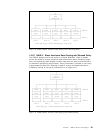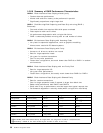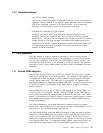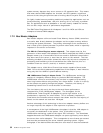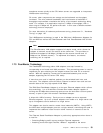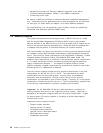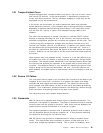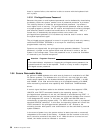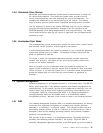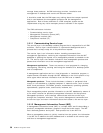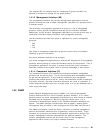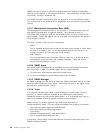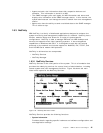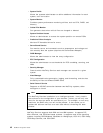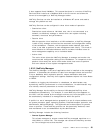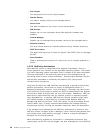
1.8.5 Selectable Drive Startup
Selectable drive startup allows the system owner or administrator to select the
IPL source and sequence. This allows the system owner to control the IPL
source, but prevents the user from modifying the source and sequence. For
example, the diskette drive can be excluded as an IPL source. This feature
helps to ensure that the system owner′s specified operating system is loaded.
The IPL sequence is stored in the system EEPROM, and can only be changed
using the privileged-access password. Storage of the IPL sequence in the
EEPROM protects it from being deactivated by removing the battery. The setup
routine ensures that at least one IPL source is specified if the privileged-access
password is used.
1.8.6 Unattended Start Mode
The unattended start mode automatically restarts the server after a power failure
and resumes normal operation, without operator intervention.
It locks the keyboard when the system is powered on, but it allows the operating
system and startup files to be loaded. The keyboard remains locked until the
power-on password is entered.
This mode is useful for unattended operations because it allows authorized
network user access to information on the server but prohibits unauthorized
access via the system keyboard.
When the system is in the unattended mode, the password prompt will not
appear unless an attempt to start the system from a diskette or other removable
media is issued. If you start the system from a removable media, the password
prompt will appear and you must enter the correct power-on password to
continue.
1.9 Systems Management
Systems management is an important element of a successful LAN. The IBM PC
Server brand ships with a very powerful systems and network management tool
called NetFinity. In this section, we look at the capabilities of NetFinity; first, we
need to take a look at some of the underlying technology which NetFinity has
incorporated. NetFinity incorporates DMI which is an emerging standard for
managing desktop machines and SNMP which is an established network
management protocol. We take a look at each of these in the following sections.
1.9.1 DMI
The Desktop Management Interface (DMI) is a standard developed by an industry
consortium that simplifies management of hardware and software products
attached to, or installed in, a computer system. The computer system can be a
stand-alone desktop system, a node on a network, or a network server. DMI is
designed to work across desktop operating systems, environments, hardware
platforms, and architectures.
DMI provides a way to obtain, in a standardized format, information about the
hardware and software products installed in the system. Once this data is
obtained, management applications written to the DMI specs can use this data to
Chapter 1. IBM PC Server Technologies 37



